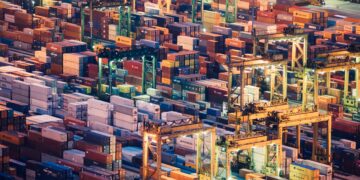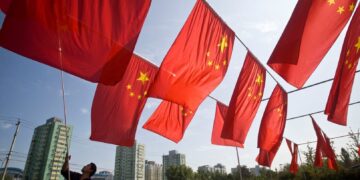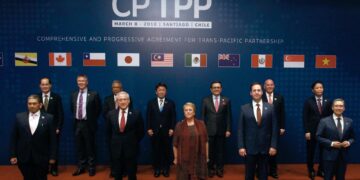A March 2019 explosion at a chemical plant in China’s Jiangsu province has refocused public attention on environmental issues across the country. The latest in a series of incidents, the blast is now forcing China to carry out a difficult balancing act between managing economic uncertainty and winning its self-declared “war on pollution.” The focus is quickly turning to environmental enforcement, in order to address questions regarding whether enough had been done to prevent this kind of tragedy from reoccurring.
Vigorous Enforcement Is the New Normal
Environmental regulation in China has become much more robust in recent years, with a corresponding increase in enforcement activity. Beginning in late 2015, a national inspection plan covering all 31 of China’s provinces began, lasting nearly three years. Leading up to the 19th National People’s Congress in late 2017, as many as 40 percent of the country’s factories were forced to shut down at some point, and more than 17,000 elected officials were investigated. In addition to the challenges created by the inspections themselves, firms have struggled with interruptions in their supply chains, and the inspections and closures have resulted in canceled and unfulfilled orders.
In addition to stepping up enforcement, China has also sought to address safety issues by relocating potentially hazardous industrial facilities (particularly chemical plants) to more remote industrial parks, far from population centers. For example, the State Council issued a guiding opinion calling for all companies manufacturing hazardous chemicals to be relocated to specialized industrial parks by 2025. Even prior to the explosion, Jiangsu province—a hub for chemical manufacturing—had issued a similar plan to relocate chemical plants away from population centers. Implementation of relocation efforts has been uneven, however, particularly with respect to compensation payable to the facilities.
The Jiangsu Chemical Plant Explosion and China’s Response
The March 21 explosion occurred at the Tianjiayi chemical plant in Xiangshui, Jiangsu province. The blast broke windows up to five kilometers away and destroyed a significant portion of the surrounding industrial park, killing 78 people and injuring hundreds more. This is not the first such incident in China—the same industrial park experienced an explosion in 2007 that killed eight people, and an even larger explosion occurred at a chemical warehouse in Tianjin in 2015. Chinese environmental conditions remain a significant concern beyond headline-grabbing explosions, with more than 110 fatalities resulting from industrial accidents in the first four months of 2019.
The event spurred a significant emergency response at the national and local levels. The local government moved almost immediately to close the entire industrial park and the State Council ordered immediate safety inspections of chemical parks across the country, instructing regulators to shut down plants if necessary. The Jiangsu provincial government quietly walked back plans to close half of the nearly 7,000 chemical facilities in Jiangsu within 18 months, but has since announced plans to close or relocate all facilities outside of industrial parks and within one kilometer of the Yangtze river, and to relocate residents living within a “safety buffer” zone, before 2020. Enforcement activity has also spiked. To guide enforcement efforts, the Ministry of Ecology and Environment (MEE) issued new guidelines in May 2019 regarding administrative penalties and calling for the establishment of a formula for penalties based on the duration of the violation, the level of cooperation, and the affected environment and population. However, the guidelines do not address the economic benefit to the party in non-compliance (i.e. the incentive not to comply).
Structural Reform Challenges Remain
Despite China’s determination to improve environmental compliance and industrial safety, significant challenges remain. The factory at which the 2019 Jiangsu explosion occurred, for example, was fined six times for violation of waste-handling rules between 2016 and 2018, and the facility was shut down for seven months in 2018 for environmental concerns. The factory thus serves as an illustrative example of how unresolved structural issues and the lack of enforcement follow-through can hamper environmental protection and threaten public safety.
Coordination between local and central governments on environmental issues has been an ongoing challenge for China, in addition to severe understaffing (China’s MEE has around 500 employees, in contrast to over 14,000 at the United States Environmental Protection Agency). The central government has also incentivized environmental enforcement, with performance now being evaluated partly on environmental factors rather than solely on economic growth. Officials can also face demotions and financial penalties for failure to enforce environmental laws. However, economic growth remains a priority for local officials, particularly in a slowing economy, and enforcement remains very inconsistent between regions. For these reasons, companies operating in China need to closely monitor both local conditions and national policy developments.
Policymakers have also taken steps to elevate the importance of industrial and chemical safety in the administrative state. Last year, a new Ministry of Emergency Management (MEM) was created, incorporating the old State Administration of Work Safety, which regulated chemical safety, as well as fire-fighting and disaster relief responsibilities. As a Ministry-level agency, MEM carries great clout within the Chinese government, and has used this clout to push a number of chemical safety measures and risk audits in chemical production. The State Council also proposed a new chemical regulation and registration framework earlier this year.
Finally, China has struggled to find the right balance between environmental regulation and economic growth. Since China’s economy began slowing, businesses have been more vocal regarding the burden imposed by environmental regulations, and the government has indicated it will address those concerns. Premier Li Keqiang, for example, has raised the suggestion of a grace period for businesses to comply after a violation as a less burdensome alternative to shutdowns.
* * *
Companies with manufacturing facilities in China should expect more stringent environmental enforcement in light of the Jiangsu explosion. Although companies cannot eliminate the risk and unpredictability associated with regulatory shutdowns, shutdown impacts can be reduced or mitigated through proactive measures.
Companies should be fully conversant with current laws, regulations, and consultations, at both the government and municipal levels. However, compliance with regulations is not enough—companies must horizon-scan to anticipate regulators’ future areas of focus. Direct engagement with regulators can be beneficial in this respect and also provide an opportunity for input on forthcoming regulations—CIBDEG has had considerable success organizing roundtable meetings using this approach.
Companies should engage competent and experienced local counsel who are familiar with regional personnel and practices for legislative background and to help motivate compliance. The discretion of local regulators drives much of China’s enforcement activity; good relationships and familiarity with local arrangements are critical in preparing for, and responding to, enforcement actions.
CIBDEG
The China International Business Dialogue on Environmental Governance (CIBDEG) is a working group under the Environmental Law Institute (ELI) established in partnership with Latham & Watkins.






























